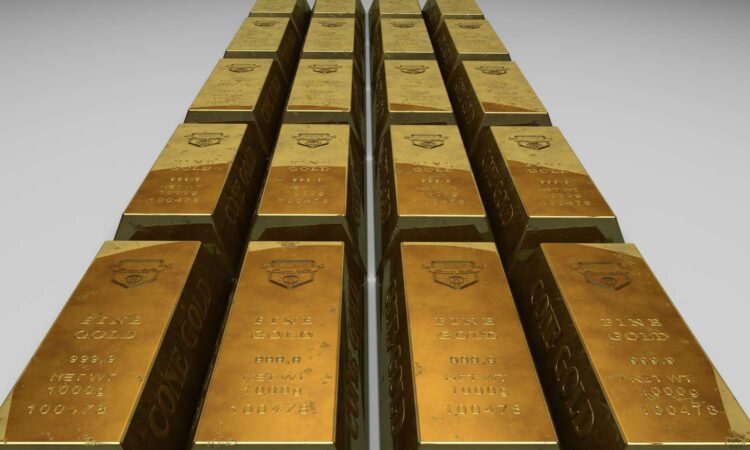
Ah, the enduring appeal—and influence—of gold. Even though it is no longer used as a primary form of currency in developed nations, the yellow metal continues to have a strong impact on the value of those currencies. Moreover, there is a strong correlation between its value and the strength of currencies trading on foreign exchanges.
To help illustrate this relationship between gold and foreign exchange trading, consider these five important features of the yellow stuff:
Key Takeaways
- Throughout human history, gold has been used as a money form in one way or another.
- From gold coins to paper notes backed by the gold standard, only recently has money moved to a fiat system that is not backed by a physical commodity.
- Since then, inflation and a declining dollar have meant rising gold prices. By purchasing gold, people can also shelter themselves from times of global economic uncertainty.
- Gold levels may also influence national economies engaged in global trade and international finance.
Gold Was Once Used to Back up Currencies
As early as the Byzantine Empire, gold was used to support national currencies—that is, those considered legal tender in their nation of origin. Gold was also used as the world reserve currency up through most of the 20th century; the United States used the gold standard until 1971 when President Nixon discontinued it.
Until the gold standard was abandoned, countries couldn’t simply print their fiat currencies ad nauseam. The paper money had to be backed up by an equal amount of gold in their reserves (then, as now, countries kept supplies of gold bullion on hand). Although the gold standard has long fallen out of in the developed world, some economists feel we should return to it due to the volatility of the U.S. dollar and other currencies; they like that it limited the amount of money nations were allowed to print.
Gold Used to Hedge Against Inflation
Investors typically buy large quantities of gold when their country is experiencing high levels of inflation. The demand for gold increases during inflationary times due to its inherent value and limited supply. As it cannot be diluted, gold is able to retain value much better than other forms of currency.
For example, in April 2011, investors feared declining values of fiat currency and drove the price of gold to a staggering $1,500 an ounce. This indicates there was little confidence in the currencies on the world market and that expectations of future economic stability were grim.
Note that economists are split over whether gold has proved to be as good of an inflation hedge as its promoters claim, since the data is inconsistent. Sometimes exceeding the inflation rate, and sometimes falling well short over periods of time. gold has been shown to be a much more effective hedge against economic downturns.
The Price of Gold Affects Countries That Import and Export It
The value of a nation’s currency is strongly tied to the value of its imports and exports. When a country imports more than it exports, the value of its currency will decline. On the other hand, the value of its currency will increase when a country is a net exporter. Thus, a country that exports gold or has access to gold reserves will see an increase in the strength of its currency when gold prices increase, since this increases the value of the country’s total exports.
In other words, an increase in the price of gold can create a trade surplus or help offset a trade deficit.
Conversely, countries that are large importers of gold will inevitably end up having a weaker currency when the price of gold rises. For example, countries that specialize in producing products made with gold, but lack their own reserves, will be large importers of gold. Thus, they will be particularly susceptible to increases in the price of gold.
When central banks purchase gold, it affects the supply and demand of the domestic currency and may result in inflation. This is largely due to the fact that banks rely on printing more money to buy gold, thereby creating an excess supply of fiat currency.
Gold Prices Are Often Used to Measure the Value of a Local Currency
Many people mistakenly use gold as a definitive proxy for valuing a country’s currency. Although there is undoubtedly a relationship between gold prices and the value of a fiat currency, it is not always an inverse relationship as many people assume.
For example, if there is a high demand from an industry that requires gold for production, it will cause gold prices to rise. But this will say nothing about the local currency, which may very well be highly valued at the same time. Thus, while the price of gold can often be used as a reflection of the value of the U.S. dollar, or any currency, conditions need to be analyzed to determine if an inverse relationship is indeed appropriate.
The Bottom Line
Gold has a profound impact on the value of world currencies. Even though the gold standard has been abandoned, gold as a commodity can act as a substitute for fiat currencies and be used as an effective hedge against inflation. There is no doubt that gold will continue to play an integral role in the foreign exchange markets. Therefore, it is an important metal to follow and analyze for its unique ability to represent the health of both local and international economies.

